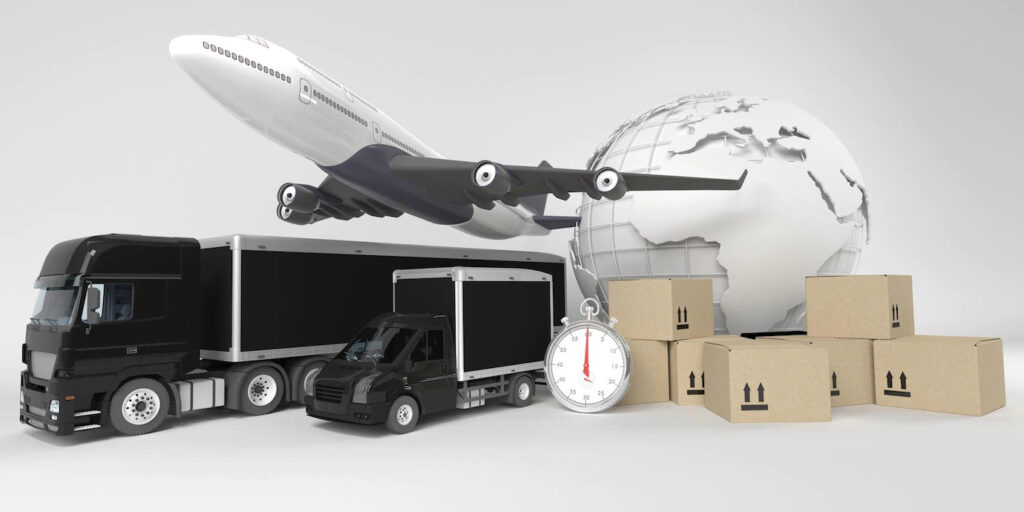The Step-By-Step Guide To Using Online Freight Forwarding
by Nabamita Sinha Entrepreneurship 23 August 2023

Whether you’re starting a new business in the digital economy, or you’re looking for ways to rapidly grow your existing enterprise, implementing the right logistics strategy is crucial to success. Ensuring your online business can rapidly and reliably deliver products to customers worldwide is crucial to the success of your operations, and your profitability.
For most smaller companies, this means finding the right partners to work with on a global fulfilment process. Online freight forwarding offers business owners a convenient way to manage their logistics process through a digital platform. Plus, some providers can also provide access to additional resources and tools, such as real-time tracking services, and financial support.
According to BusinessWire, the market for global digital freight forwarding is expected to reach a value of $20.63 billion by 2027 alone. So, if you’re an e-commerce or online retailer planning on using an online freight forwarding service to help your business expand, now is the time to jump on board. That said, here’s your step-by-step guide to getting started.
Step 1: Understanding Online Freight Forwarding

The first step in successfully leveraging an online freight forwarding service is understanding what these partners can provide. Online freight forwarders utilize a combination of digital platforms, advanced technologies, and logistics services to help businesses plan and optimize their fulfilment strategies and manage more efficient supply chains. Where traditional freight forwarding generally relies on a number of manual processes and paperwork, online freight forwarding aims to make things simpler.
Online freight forwarding can help businesses automate complex processes, boosting efficiency and reducing operational costs. It can also offer a solution to valuable real-time data and assist organizations in making quick decisions for long-term growth.
Step 2: Choose The Right Freight Forwarding Platform
Once you understand the difference between traditional freight forwarding solutions and online alternatives, the next step is finding the right platform. Most online freight forwarding platforms will offer specific tools for digital businesses, built into an easy-to-use and straightforward platform. While there’s no one-size-fits-all strategy for choosing the right solution, there are some core factors you should consider, such as:
- Experience and expertise: The right online freight forwarder will be more than just a logistics expert. They’ll also have a clear understanding of your industry and a strong relationship with partners all over the globe. They should be able to help you handle everything from managing shipment fees in different markets to dealing with customs.
- Service selection: Some companies can offer value-added solutions, such as door-to-door services which eliminate the need to hire a different service to move products from a port to a warehouse. Other vendors may be able to offer access to customs clearance assistance and tools to help with documentation.
- The technology: The best online freight forwarding platform should provide easy access to a range of tools. They should help businesses access instant quotes, book deliveries rapidly, and track shipments over time.
- Flexibility: As your business evolves, your supply chain needs may change. Choosing a freight forwarder that can accommodate last-minute changes in your schedule can be extremely helpful. It’s also useful to look for a partner that can offer access to alternative delivery options and flexible payment schedules.
- Customer service: Your ideal online freight forwarder should be able to offer a personalized and consistent level of 24/7 service. They should be able to assist you with every stage of the supply chain process, to ensure you meet your demands on time.
Step 3: Sign Up And Start Exploring
Most online freight forwarding companies make it extremely easy to get started. You should be able to create an account just by sharing a couple details about your business. Ideally, you should be working with a vendor that helps you reduce shipping costs by giving you insights into the best deals and shipping quotes in real time.
Once you’ve booked your freight carrier, all you should need to do is make sure your goods are ready to transport. The carrier will collect your goods for shipment, and you’ll be able to use your dashboard to track your products while they’re moving through the supply chain.
Step 4: Make The Most Of Your Online Tools
The best vendors make it easy and fast to not only book shipping and fulfilment services, but also to find new ways to grow your brand. For example, keeping track of your shipment’s progress at every stage of transit and providing regular updates to your customers will improve their experience. Plus, a good online forwarder should be available to answer any questions you might have.
Getting Started With Online Freight Forwarding
The digital revolution has led to an increase in the number of online freight forwarding solutions designed specifically for ecommerce and online retailers. With the right partner, you can simplify your supply chain, improve the fulfillment process, and potentially improve your relationships with customers around the world. What’s more, with access to a range of tools in one place, you’ll find it’s much easier to manage the complex parts of your supply chain without incurring additional costs.
Read Also:






































































































